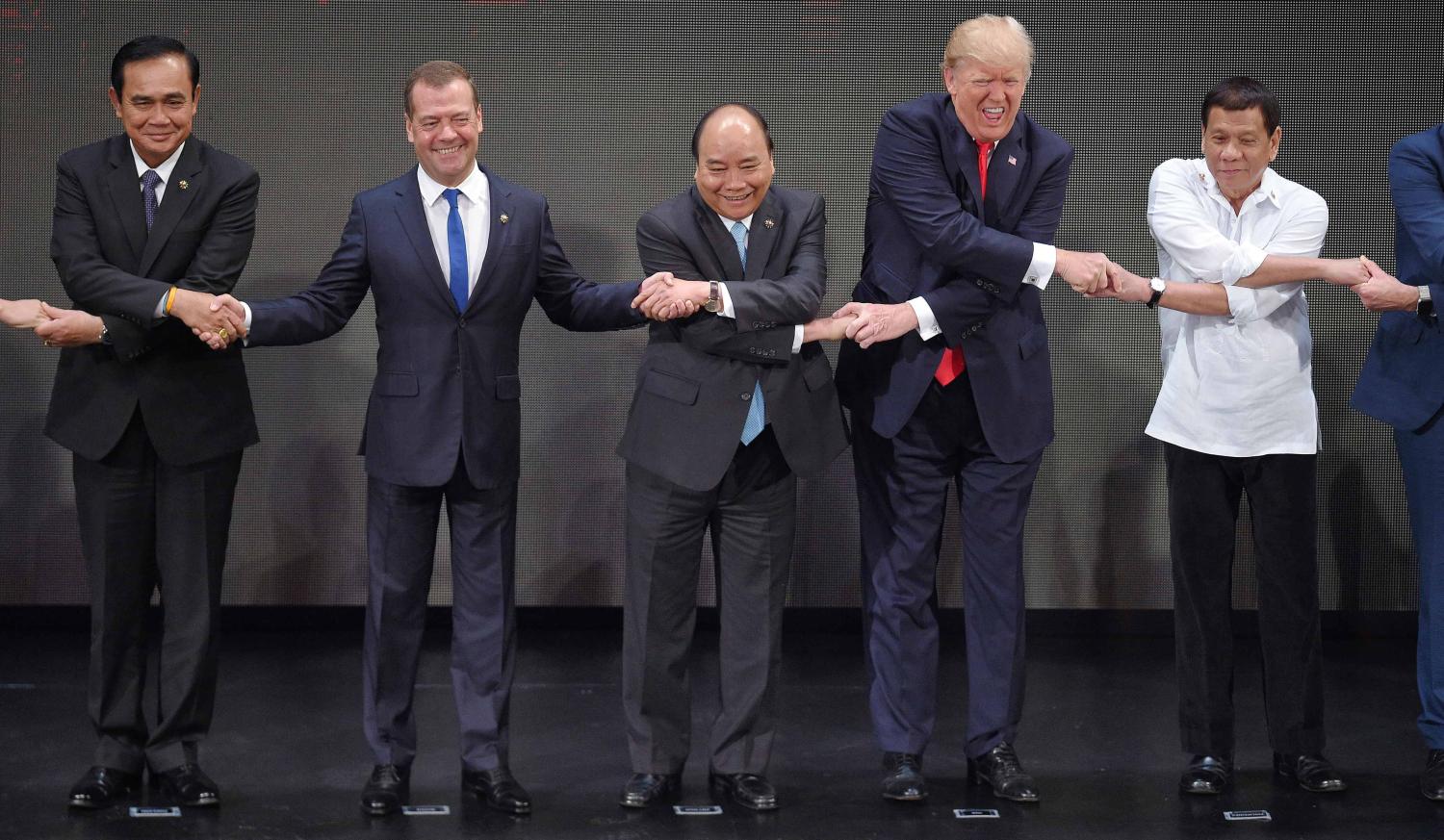Even as the Association of South East Asian Nations celebrates its 50th year, the summit held in Manila this week served to highlight the fundamental faults within the bloc. But there are glimmers of hope for the millions who live in ASEAN countries despite the at times molasses-like processes required by the charter.
The quest to establish a Code of Conduct between ASEAN and China in the South China Sea has inched forward, with the excitement over an announcement of mere negotiations proving just how meandering the process has become. The code will outline ‘rules’ within the waters as border disputes continue. But there is still no hint when talks will begin or who will be involved. A robust Code of Conduct has been touted as the next best option to a definitive and accepted ruling on maritime boundaries, but these negotiations are too prone to the whims of domestic politics to achieve long-lasting results.
But for all the big-ticket focus on the South China Sea as a matter of national security and sovereignty, the confrontation doesn’t much impact on the day-to-day lives of most of Southeast Asia’s population. Reform of migrant worker rules, by contrast, goes to an issue very real in daily experience and has moved faster.
The ‘ASEAN Consensus on the Protection and Promotion of the Rights of Migrant Workers’ is the culmination of debate that split Indonesia and the Philippines, the two largest countries from where migrant workers hail. The Philippines wanted a ‘morally binding’ declaration fearing a stalemate if Indonesia got its way with a legally binding declaration. Both arguments seemed reasonable: 'why bother passing it if violators are not legally accountable' versus 'why bother trying to pass it only for it to be nixed by destination states Singapore and Malaysia.'
While the ‘consensus’ this week is not explicitly legally binding, it is promising on two fronts. Firstly, it lays out a path to formalise a plan of action throughout 2018, reflecting a domestic push from within member states to resolve abuses and mistreatment of nationals overseas. Secondly, it takes into account a wide range of labour issues championed by activists and unions, including safeguards against gender and racial discrimination and protections from violence and sexual harassment.
Marwai was another big test for ASEAN. The end of the longest ever urban siege in a Philippines city last month has rightfully been celebrated as a win for regional counter-terrorism efforts. The collective regional response to Marawi City was the first major test after years of statements and joint communiques from the East Asia Summit, APEC and ASEAN Defence Ministers Meetings. These emphasised the importance of a regional response to radicalism – particularly between the Philippines, Malaysia and Indonesia. The conflict has hurried along the timeline of long-feted naval patrols in the Sulu Sea that will likely be expanded to include Brunei and Singapore.
But ASEAN simply ignored other crucial security issues. The ever-deepening crisis in Myanmar’s Rakhine State has seen hundreds of thousands of Rohingya flee across the border and a death toll reported mounting death toll. Despite the best efforts of Malaysia and Indonesia, a draft of the final communique leaked to the media referred only to ‘affected communities’ in Myanmar, in line with a Burmese policy of refusal to acknowledge the Rohingya people.
That one member state can repeatedly spike any clear reference to one of the world’s worst humanitarian crises on the basis of sovereignty and ‘non-interference’ undermines a point made by Myanmar’s de facto leader Aung San Suu Kyi herself back in 1999. 'The policy of non-interference is just an excuse for not helping,' she pleaded then during a brief respite from house arrest under the military junta. 'In this day and age, you cannot avoid interference in the matters of other countries.'
This remains the defining contemporary fault of the bloc - ASEAN is capable of responding to conflict, it is just choosey about which conflicts to prioritise. Which raises the question that if ASEAN was initially established all those years ago in order to prevent further conflict between Southeast Asian states, what happens to its mandate once regional peace has been established and maintained? Border spats, most recently between Laos and Cambodia but also Thailand and Malaysia, and maritime security challenges, are typically dealt with swiftly but via bilateral channels, not through the bloc as a mediator.
For commentators, the 50th anniversary of ASEAN was a time to pearl-clutch over the importance of the bloc and muse on its viability in the future. The consensus all year has appeared to be that change needs to come to the charter, and quick, or we may as well hang up our matching national dress and fumbling group handshakes. This is a ruthlessly myopic ideal of what ASEAN should be. We need to make room for the wins it has achieved and the potential it has for the next 50 years.

